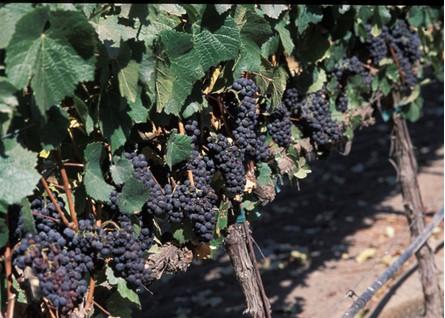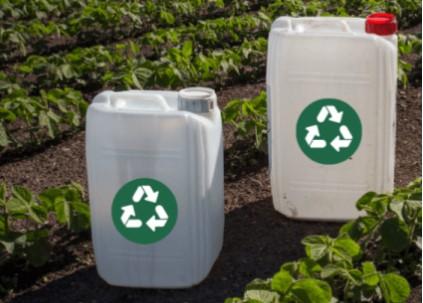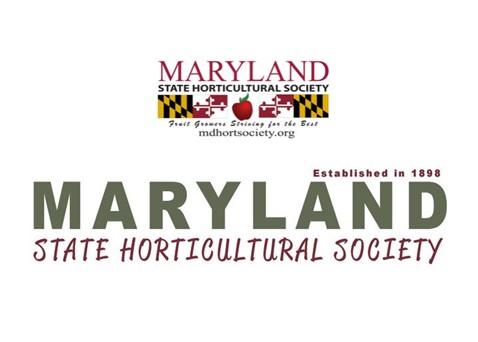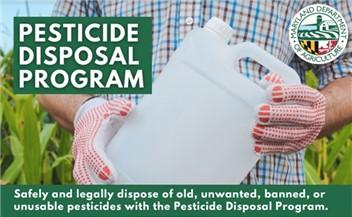
June 10, 2021 | Volume 12, Issue 3
June Vegetable IPM Scouting Tips
By Emily Zobel, Senior Agent Associate, Agriculture, University of Maryland Extension-Dorchester County
When scouting, check 5-10 locations (~50 plants) throughout the field when making treatment decisions. Localized infestations can be spot treated to save time and money. For...Read more>>
Watch for Thrips and Mites in Vegetables
By Jerry Brust, Extension IPM Vegetable Specialist, University of Maryland
The hotter temperatures we have had have caused thrips and to a lesser extent two spotted spider mite, TSSM (Tetranychus urticae ) populations to rapidly increase in...Read more>>
Seeing Some Unhappy Cucurbit Plants
By Jerry Brust, Extension IPM Vegetable Specialist, University of Maryland
Starting to see some watermelon, cucumber and other cucurbit crops that are looking a bit pale green...Read more>>
Bruising on Strawberry Foliage
By Jerry Brust, Extension IPM Vegetable Specialist, University of Maryland
Over the last few weeks, I have been sent pictures of and have seen dark spots on the foliage of strawberry plants
(figs. 1 and 2). These spots...Read more>>
Cyclamen Mites Found in Strawberries
By Jerry Brust, Extension IPM Vegetable Specialist, University of Maryland
Cyclamen mites have been found in a few mid-Atlantic strawberry fields as well as more widespread to...Read more>>
Virus Problems Found in Garlic
By Jerry Brust, Extension IPM Vegetable Specialist, University of Maryland
Garlic growers may be noticing symptoms of virus infection in their plants that show yellowing tips on many leaves with some..Read more>>
With Rainfall so Comes Phytophthora and Pythium
By Andy Wyenandt, Specialist in Vegetable Pathology Rutgers University
Most of the region has finally gotten rain and pop-up thunderstorms making conditions ideal for pathogens such...Read more>>
Pythium in Vegetable Production
By Alyssa Koehler, Extension Field Crops Pathologist, University of Delaware
A few weeks ago, we discussed Pythium in field corn, but it can also cause problems in...Read more>>
Magnesium Deficiencies in Vegetables
By Gordon Johnson Extension Vegetable & Fruit Specialist University of Delaware
Each year we see cases of magnesium deficiency in vegetables. This is a common problem with tomatoes, but all vegetables are...Read more>>

Maryland Fruit & Vegetable Blog
What more great information between issues of the Fruit and Vegetable Newsletter, then check out the new Maryland Fruit & Vegetable Blog!

Corn Earworm Management in Sweet Corn Needs Assessment Survey
Dr. Kelly Hamby, Associate Professor/Extension Specialist with the Department of Entomology at the University of Maryland, is leading a team of researchers who have developed a survey to prioritize research and extension efforts for improving corn earworm management in sweet corn throughout the Northeast. We appreciate your participation in this survey and will use the results to develop a grant proposal to try to get federal funding to address these needs.
Complete the Survey
MSHS is Reminding Everyone About Membership Renewal
Membership is open to everyone, especially those involved in the production of fruit and vegetables. Consider the benefits you receive from the Maryland State Horticulture Society. Share information with other producers and encourage them to consider being a member. If you have not already, please consider renewing your 2021 MSHS membership. Your dues dollars support much-needed research and more!
Membership Renewal Form

World Food Safety Day
June 7th was World Food Safety Day. In 2018 the United Nations (UN) declared this day as a day to focus on and bring attention to the importance of safe food worldwide. The annual number of foodborne illness cases is estimated to be 600 million worldwide and deaths exceed 420,000 with 40% of those deaths attributed to children under the age of five. We know that the causes of foodborne illness can be invisible to the naked eye and can be viral, bacterial, from parasites, or due to toxic chemicals that enter the food stream.
The UN chose this year’s theme as ‘Safe food today for a healthy tomorrow’. The UN and the World Health Organization along with the US Food and Drug Administration (FDA) are concentrating on bringing awareness to the need for food safety in all aspects of the food chain, from growing, to harvesting, processing, distribution, handling, and on to the consumer and consumption level.
In Maryland, we are privileged to have not only the FDA and USDA but also the Maryland Department of Agriculture (MDA) and the Maryland Department of Health (MDH) working to ensure a safe food chain. Farmers commit to safe food production and handling through compliance to the FSMA Produce Safety Rule (PSR). Employees of the MDA Food Quality Assurance Program have been inspecting farms for their compliance to the PSR.
For more information on navigating the levels of the PSR, Click here>>
To watch a video to help guide Maryland farmers through the process of registration, Click here>>
By Gordon Johnson, Extension Vegetable & Fruit Specialist, University of Delaware
I recently had several trays of tomato seedlings that were not growing properly in 128 cell trays. They were reddish yellow in color and stunted. We moved them into...Read more>>
Bacterial Diseases in Tree Fruit
By Gordon Johnson, Extension Vegetable & Fruit Specialist, University of Delaware
This is the time of spring when we see the results from fire blight infections in pome fruits. In addition, warm...Read more>>
Keeping it Cool: Cold Storage Recommendations for Apples and Peaches
Deepika Tripu, Candidate for B.S. in Biochemistry & Macarena Farcuh, Ph.D., Assistant Professor, and Extension Specialist, University of Maryland, College Park
Why do we need cold storage? Fruits such as apples and peaches are highly perishable and thus have a limited market life potential. Cold storage...Read more>>
EPA Releases Updated Occupational Pesticide Handler and Post-application Exposure Calculators
Occupational Pesticide Handler Exposure Calculator and Occupational Pesticide Post-application Exposure Calculator with the latest available data and sources to provide the agency with more efficiency in completing risk assessments and ensuring transparency to the public and affected stakeholders. EPA uses these tools to carry out risk assessments to make informed decisions when approving new pesticides, new uses of registered pesticides, and during regular reviews of existing pesticides. The updated exposure values are more reflective of actual exposures to occupational pesticide handlers and post-application scenarios, which reduces uncertainty in decisions and serves as the basis for labeling decisions.
The calculators also help state and local governments pesticide manufacturers, academics, and others evaluate the potential for health effects to a person who might be exposed to pesticides as part of their work. They provide exposure information for risk assessments based on exposure scenarios, exposure routes, and applicable personal protective equipment.
Updates to the occupational handler calculator include adding new handler exposure estimates from the Agricultural Handler Exposure Task Force (AHETF) that monitored dermal and inhalation exposure for workers using closed systems to load liquid and solid pesticides. The updated exposure values are based on a well-designed recruitment, monitoring, and data analysis efforts and will more accurately represent exposures to occupational pesticide handlers. The occupational post-application calculator is updated to reflect contemporary agricultural practices and clarify crop-specific activities.
Learn more about the calculators and how EPA assesses pesticide risks on our website.

Crops Twilight & Ice Cream Social-CMREC Upper Marlboro Farm
August 4, 2021
You are invited to the Fields Crops Research Twilight and Ice Cream Social at the Central Maryland Research & Education Center, 2005 Largo Road, Upper Marlboro, on Wednesday, August 4, 2021, from 4:00 to 9 PM.
Dinner may be purchased, (provided by the UMD Alpha Gamma Rho (AGR) Fraternity Cook Team), and will be served from 4:00 pm to 6:00 pm followed by homemade ice cream prior to the evening tour. University of Maryland Extension Educators and Specialists will showcase their field crop, vegetable, and fruit research plots. University of Maryland Extension Educators and Specialists will showcase their field crop, vegetable, and fruit research plots.
Purchased meal, provided by the UMD AGR Fraternity Cook Team at 4:00 PM Ice cream Served at 5:15 PM Crops Twilight at 6:00 PM Please arrive on time as the walking and wagon tours will start promptly at 6:00 PM. A reserved event ticket is required. If you need special assistance to participate, please contact the Anne Arundel County Extension office at 410-222-3906 by August 2nd.
-

Maryland Wine and Grape Promotion Fund Accepting Grant Applications
Maryland Wine and Grape Promotion Fund Accepting Grant Applications -
-

MDA Pesticide Container Recycling Program

The Maryland State Horticultural Society is excited to announce the 2021 Summer Tour on July 7th, giving orchard growers and others interested ideas on fruit production and marketing an opportunity to gather. The tour will start at 78 Acres, 23340 Fruit Tree Drive in Smithsburg, Maryland. Check in will start at 8:30 a.m. Others orchards on the tour include: Mountain Valley Orchard & Gardenhour Orchard A refreshing cold lunch will be provided at Mountain Valley Orchard. Plenty of drinks will be available on the tour, as the weather may be warm. Ticket costs for members are $25.00, and non-members $35.00. Young growers 6-16 are encouraged to attend at a reduced ticket cost of $10.00 and our youngest growers 5 and under are free. Carpooling is Strongly Encouraged. To register>>
Vegetable & Fruit News, June 10, 2021, Volume 12, Issue 3 (pdf)
Vegetable & Fruit News is a timely publication for the commercial vegetable and fruit industry available electronically in 2021 from April through October on the following dates: April 15, May 13, June 10, July 15, August 19, September 9, and October 28 (Special Research & Meeting Edition). Published by the University of Maryland Extension Focus Teams: 1) Agriculture and Food Systems; and 2) Environment and Natural Resources.
Subscribe to Vegetable & Fruit News
EDITOR
R. David Myers
Extension Educator, Agriculture, and Natural Resources
97 Dairy Lane
Gambrills, MD 21054
Phone: (410) 222-3906



